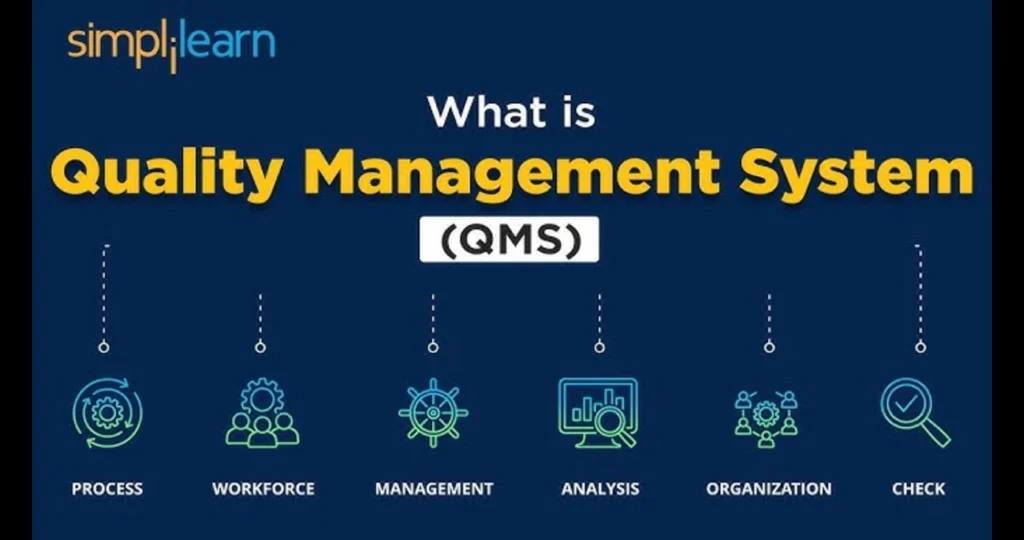Introduction to Quality Management Systems (QMS)
In today’s competitive landscape, businesses constantly seek ways to enhance operations and deliver quality products or services. Enter Quality Management Systems (QMS), a robust framework that helps organizations streamline processes, boost efficiency, and meet customer expectations. But what exactly is a QMS? Think of it as the backbone of an organization’s commitment to excellence. This structured approach ensures compliance with industry standards and paves the way for certification success.
As companies navigate complex regulations and strive for continuous improvement, understanding the importance of effective QMS implementation becomes essential. Whether you’re new to this concept or looking to refine your system, exploring best practices can set you on the right path toward achieving remarkable results. Let’s dive into why investing in Quality Management Systems is more than just a checkbox; it’s about cultivating a culture of quality that resonates throughout every level of your business.
Importance of Compliance and Certification
Compliance and certification are essential elements of Quality Management Systems. They ensure that an organization meets industry standards and regulations, which can significantly enhance its reputation.
Achieving compliance demonstrates a commitment to quality. It reassures clients and stakeholders that your processes align with best practices. This trust can lead to increased customer loyalty and repeat business.
Certification also opens doors to new markets. Many industries require specific certifications before engaging in contracts or partnerships. Organizations without these credentials may miss out on valuable opportunities.
Moreover, maintaining compliance helps identify areas for improvement within the system. Regular audits encourage continuous monitoring, leading to greater efficiency over time.
Staying compliant is not just about avoiding penalties; it’s about fostering a culture of excellence throughout the organization. Companies prioritising this aspect often see tangible benefits reflected in their overall performance.
Best Practices for Implementing a QMS
Implementing a Quality Management System (QMS) requires strategic planning and commitment. Start by defining clear objectives that align with your organization’s goals. This clarity guides the entire process.
Engage employees at all levels. Their buy-in is crucial for successful implementation. Provide training to ensure everyone understands their roles within the QMS framework.
Documentation plays a vital role in any QMS. To create team accountability and transparency, maintain thorough records of processes, policies, and outcomes.
Review and update processes regularly based on feedback and performance metrics. Continuous improvement should be part of your culture, not just an afterthought.
Consider establishing a cross-functional team dedicated to overseeing the QMS implementation. Collaboration fosters innovation while addressing issues swiftly as they arise.
Tools and Technologies for QMS
Quality Management Systems thrive on the right tools and technologies. These resources streamline processes, enhance collaboration, and improve overall efficiency.
Software solutions like ISO 9001 compliance software offer frameworks for documentation and audits. They simplify procedure tracking and ensure adherence to standards.
Cloud-based platforms enable real-time access to quality data from anywhere in the world. This flexibility supports remote teams while maintaining transparency across departments.
Automation is another game-changer. It reduces human error by automating repetitive reporting and data entry tasks. With this technology, organizations can focus on continuous improvement rather than mundane chores.
Data analytics tools provide insights into performance metrics. By analyzing trends, companies can identify areas needing enhancement or adjustment.
Investing in these modern tools boosts productivity and fosters a culture of quality throughout the organization.
Case Studies: Successful Implementation of QMS
Case studies illustrate the tangible benefits of Quality Management Systems (QMS) across various industries. One notable example is a leading manufacturing firm that faced consistent production delays and quality issues. By adopting a QMS, they streamlined processes and established clear performance metrics. This resulted in a 30% reduction in defects within the first year.
Another compelling case involves a healthcare organization struggling with patient care standards. Implementing a QMS allowed them to define protocols and enhance staff training. Consequently, patient satisfaction scores soared by 25%, showcasing improved service delivery.
In the tech sector, an IT company utilized QMS principles to refine their software development lifecycle. Enhanced collaboration and process optimization led to faster deployment times, boosting client retention rates significantly.
These examples highlight how effective QMS implementation can drive success across diverse fields by fostering efficiency and enhancing quality outcomes.
Common Challenges and How to Overcome Them
Implementing Quality Management Systems often comes with hurdles. Resistance to change is a common challenge. Employees may feel threatened by new processes or sceptical about their effectiveness. To combat this, involve them early in the transition. Their insights can improve the system and increase buy-in.
Another frequent issue is inadequate training. Teams might struggle with unfamiliar tools or methodologies. Regular workshops and hands-on sessions can bridge knowledge gaps, ensuring everyone feels competent.
Documentation overload can also create confusion. A clear structure for documentation helps streamline processes and makes it easier for employees to find necessary information.
Maintaining ongoing compliance requires constant monitoring. Establish regular audits and feedback loops to identify areas needing improvement before they become problematic. This proactive approach keeps your QMS aligned with industry standards while fostering a continuous enhancement culture within the organization.
Conclusion: The Benefits of a Well-Implemented QMS
A well-implemented Quality Management System offers numerous advantages for organizations of all sizes. First and foremost, it fosters a culture of continuous improvement. Teams become accustomed to evaluating processes regularly, leading to enhanced efficiency and reduced waste.
Compliance with industry regulations becomes significantly more accessible as a robust QMS lays down the framework required for adherence. This minimises risks and builds trust with customers and stakeholders who value quality assurance.
Moreover, effective training programs within a QMS ensure that employees have the necessary skills and knowledge. This empowerment often translates into higher job satisfaction and improved performance levels.
Furthermore, transparency is another key benefit. A straightforward documentation process enables everyone in an organization to be on the same page regarding policies and procedures. This clarity helps identify bottlenecks quickly and encourages collaborative problem-solving.
Achieving certification can open doors to new business opportunities. Many clients prefer or require suppliers to demonstrate compliance through recognized certifications like ISO 9001.
All these elements contribute toward building a resilient organization capable of adapting to changes in market demands while maintaining high-quality standards throughout its operations. Implementing an effective Quality Management System is not just about meeting obligations, driving growth, enhancing reputation, and ensuring long-term success

